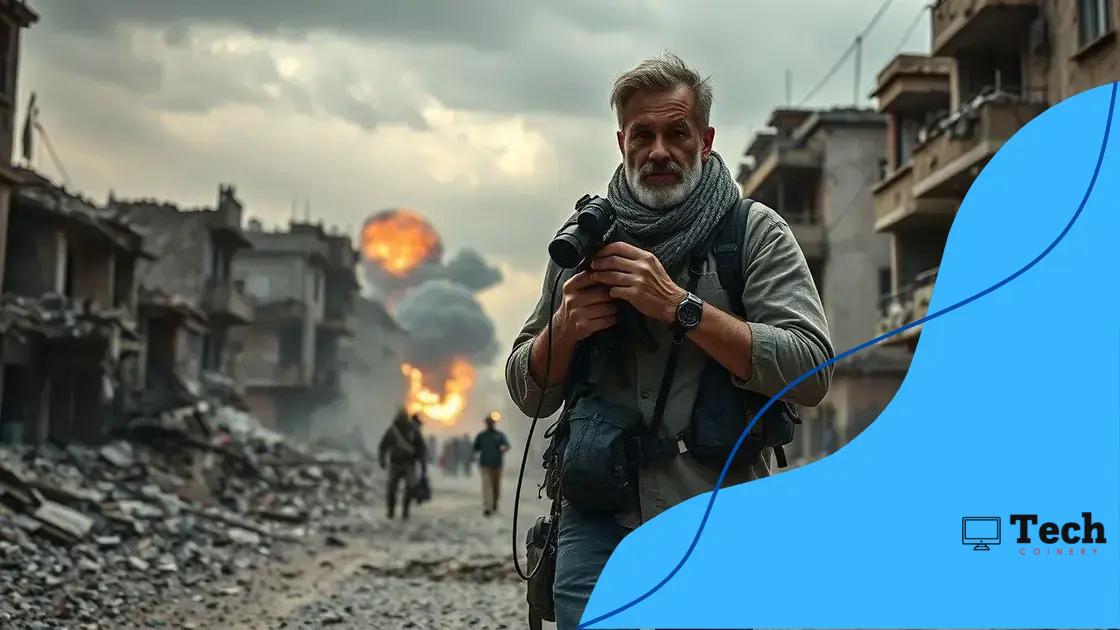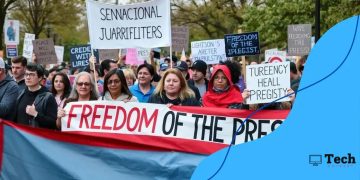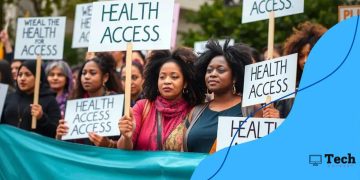Journalism in conflict zones: Navigating risks and ethics

Journalism in conflict zones involves significant risks, ethical dilemmas, and best practices to ensure safety and effective reporting, emphasizing the need for preparation, community engagement, and attention to mental health.
Journalism in conflict zones presents immense challenges, both dangerous and ethical. As reporters brave hostile environments, they balance the duty to inform with their safety. Explore the complexities and tactics for effective reporting in such delicate circumstances.
Understanding the landscape of conflict zones
Understanding the landscape of conflict zones is crucial for journalists. These areas are often unstable, filled with dangers that can threaten life and reporting. Knowledge of the environment is a key component to safe and effective journalism.
When examining these regions, it is essential to consider factors such as local politics, history, and the ongoing conflict’s nature. Journalists must stay informed about the area’s dynamics to cover stories accurately and responsibly.
The Major Factors in Conflict Zones
A few critical factors define conflict zones:
- Political instability: Continuous changes in leadership or governance greatly influence safety and reporting conditions.
- Security risks: Understanding potential threats, like armed groups or militant activity, is essential for reporter safety.
- Humanitarian issues: Journalists often encounter crises like displacement, aid shortages, and human rights violations, which are vital for informed reporting.
Additionally, the geography of a conflict zone can shift rapidly. Areas that were previously safe can become hotspots for violence, while violence may decrease in other regions. Reporting requires constant reassessment of risks. Being aware of nearby safe havens and the overall layout of the area can aid journalists in navigating challenges.
Furthermore, local customs and communication styles should not be overlooked. Respecting cultural norms can significantly enhance a journalist’s ability to report effectively without jeopardizing safety. When journalists understand the people and communities they engage with, they can build trust, leading to more accurate reporting.
The risks journalists face in war-torn areas
The risks journalists face in war-torn areas are numerous and serious. These professionals often work in hostile environments where the conditions can change rapidly. Understanding these risks is crucial for ensuring safety and effective reporting.
Among the most significant dangers are physical threats. Reporters may be caught in crossfire or subject to attacks from armed groups. It’s essential for journalists to be aware of their surroundings and the likelihood of violence in any given location.
Types of Risks Faced by Journalists
Journalists experience various risks when covering conflict:
- Kidnapping: In conflict zones, journalists may be targeted for ransom or political leverage.
- Violence: Armed conflicts expose reporters to gunfire, bombings, and assaults.
- Psychological trauma: The stress of reporting in these environments can lead to lasting mental health issues.
Technology can also present risks. Journalists rely on communication tools that may be monitored or hacked, exposing their location and intentions. Additionally, sharing sensitive information online can lead to perilous situations.
It’s important to consider the impact on local sources as well. Journalists must protect their informants, who often face severe repercussions for cooperating with the media. This necessitates a thoughtful approach to reporting, ensuring that the safety of all involved is prioritized.
Moreover, journalists often have to navigate ethical dilemmas in war-torn areas. Balancing the need to report with the well-being of individuals involved is a continuous struggle. Despite these challenges, the role of journalists remains critical in bringing vital stories to light.
Ethical dilemmas in reporting from conflict zones

Ethical dilemmas in reporting from conflict zones are complex and challenging. Journalists face critical decisions about how to report the truth while respecting the dignity and safety of the individuals involved. These dilemmas often require a careful balance between the public’s right to know and the potential harm to vulnerable populations.
One of the significant ethical concerns is how to protect the identities of sources. In a conflict zone, exposing someone’s identity can put them at grave risk. Journalists must often weigh the importance of a story against the possible consequences for those who provide information.
Key Ethical Considerations
Several key ethical considerations come into play when reporting in war-torn areas:
- Informed consent: Journalists need to ensure that individuals understand the implications of speaking to the media.
- Minimizing harm: Reporting should strive to avoid unnecessary suffering for individuals or communities.
- Accuracy: Staying truthful and fair in reporting is paramount, even in chaotic situations.
Additionally, journalists often grapple with the portrayal of violence and suffering. Striking a balance between highlighting important issues and not sensationalizing suffering is crucial. Visual imagery can impact viewers’ perceptions and responses, so careful thought must be given to how these stories are presented.
Another ethical aspect is the pressure to publish quickly, especially in fast-developing situations. This urgency can compromise verification processes, leading to the spread of misinformation. Journalists should always prioritize accuracy over speed, even in high-stakes environments.
Moreover, the role of embedded journalists presents unique ethical challenges. While being part of military units can offer safety, it can also compromise independence and objectivity. This duality requires journalists to reflect critically on their positions and the potential biases that may arise.
Case studies of journalists in the field
Case studies of journalists in the field provide valuable insights into the realities of reporting from conflict zones. Each story highlights unique challenges and decisions that shape journalistic practices in dangerous environments.
One notable case is that of a journalist who reported from Syria during the civil war. As she covered the conflict, she faced daily threats to her safety, including sniper fire and bombings. This journalist emphasized the importance of building trust with local sources. By fostering relationships with community members, she was able to gather accurate information while minimizing risks to herself and others.
Another Significant Case
In Afghanistan, a foreign reporter embedded with military units documented the realities of war. His experiences revealed the complex dynamics of being in a combat zone. While he had protection, this proximity also created potential biases in his reporting. He had to navigate the fine line between being a journalist and a participant in military actions.
- Challenges of bias: Embedded journalists must consciously address their potential biases to ensure fair reporting.
- Cultural sensitivity: Understanding local customs and perspectives can enhance credibility and safety.
- Personal sacrifices: Many journalists have to balance personal safety with the desire to share important stories.
Another compelling example is a journalist covering protests in Libya. Amidst the chaos, he prioritized his safety by using protective gear and staying informed about the local situation. He also focused on the human aspect of the protests, sharing personal stories from the ground to highlight the conflict’s impact on civilians. This approach not only made his reporting compelling but also more empathetic.
Through these case studies and experiences, we can see that the work of journalists in conflict areas is not just about reporting facts; it involves navigating dangerous landscapes while maintaining ethical standards and a commitment to authenticity. Their stories remind us of the risks taken to inform the world.
Best practices for safe journalism in crises
Best practices for safe journalism in crises are essential for protecting journalists and those they report on. In challenging environments, understanding how to mitigate risks can save lives and enhance the quality of reporting.
One fundamental practice is thorough preparation. Before entering a conflict zone, journalists should research the area and its political climate. Familiarity with local laws and customs can significantly reduce misunderstandings and conflicts. Equipping oneself with the right gear, such as bulletproof vests and helmets, is also crucial for personal safety.
Establishing Safety Protocols
Having clear safety protocols is vital. Here are some key protocols to consider:
- Buddy system: Always work in pairs or teams to ensure that help is available if needed.
- Communication plans: Set up reliable communication channels to stay in touch with your team and home base.
- Regular check-ins: Schedule frequent updates to inform others of your location and status.
In addition to preparation and protocols, being adaptable is important. Situations in conflict zones can change rapidly, and journalists must stay vigilant. Assessing surroundings often and remaining flexible can help respond to unexpected dangers.
Another critical best practice is understanding the emotional and psychological toll of reporting in crisis situations. Journalists should prioritize mental health by seeking support and practicing self-care after exposure to traumatic events. Decompression time is important to process experiences and reduce stress.
Lastly, fostering relationships with local communities can enhance safety. By building trust, journalists not only improve their reporting but can also access vital information that aids in their safety. Engaging respectfully with local populations leads to a more nuanced understanding of the context.
FAQ – Frequently Asked Questions about Journalism in Conflict Zones
What are the main risks for journalists in conflict zones?
Journalists face various risks such as physical danger from violence, potential kidnapping, and psychological trauma from stressful environments.
How can journalists ensure ethical reporting in crises?
Journalists can ensure ethical reporting by obtaining informed consent from sources, protecting their identities, and avoiding sensationalism.
What are best practices for staying safe while reporting in conflict areas?
Best practices include thorough preparation, establishing communication protocols, and working in teams to ensure safety and support.
How important is mental health for journalists working in conflict zones?
Mental health is crucial; journalists should prioritize self-care and seek support to manage stress and trauma from their reporting experiences.






